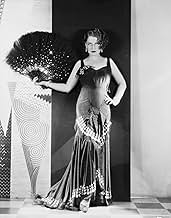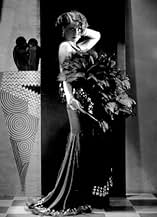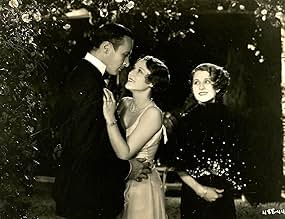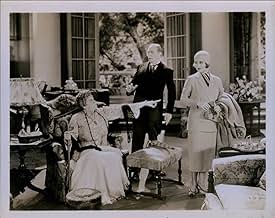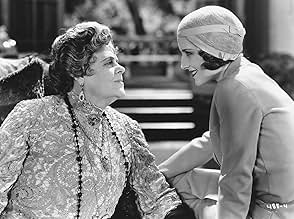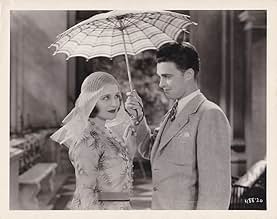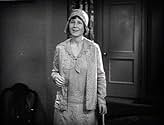Ama de casa descuidada se divorcia de su esposo tras la llegada de su amante. Se reinventa, convirtiéndose en un icono de la moda.Ama de casa descuidada se divorcia de su esposo tras la llegada de su amante. Se reinventa, convirtiéndose en un icono de la moda.Ama de casa descuidada se divorcia de su esposo tras la llegada de su amante. Se reinventa, convirtiéndose en un icono de la moda.
- Dirección
- Guionistas
- Elenco
- Premios
- 1 premio ganado en total
Rod La Rocque
- Bob Brown
- (as Rod LaRocque)
Tyrell Davis
- Wallace
- (as Tyrrell Davis)
William H. O'Brien
- Struthers
- (as William O'Brien)
Freddie Burke Frederick
- Bobby Brown - 8 Years Old
- (sin créditos)
Mary Gordon
- Mrs. McIntyre
- (sin créditos)
Marilyn Harris
- The Brown's Little Girl
- (sin créditos)
Helene Millard
- Helen Hibbard
- (sin créditos)
Dickie Moore
- Bobby Brown - 5 Years Old
- (sin créditos)
- Dirección
- Guionistas
- Todo el elenco y el equipo
- Producción, taquilla y más en IMDbPro
Opiniones destacadas
Norma Shearer dazzles as she is transformed from a frump, addle-brained house-wife to an alluring potential divorcee. Most 1930 films have a creaky edge to them -- the camera work is pretty sluggish at times -- but we must forgive these all-talking pleasures for their thump-a-long "qualities". As a guest of the eccentric globe-trotting Marie Dressler -- Shearer mixes with an odd assortment of lovelorn types, including her long-lost husband. The dialogue is fun, oft-times clever and the performances on cue. Shearer and Dressler shine the most. Shearer even shows off her piano expertise in a musical brevity. Her strange, yet appealing posturing and "affair with the camera" are evident throughout -- and she hits every emotional note, genuinely and on target. For its time . . .a good show.
A rich old lady calls on a flirtatious divorcée to woo a Lothario away from her silly soon-to-be-married granddaughter.
LET US BE GAY is an interesting little domestic comedy which features some tart dialogue (courtesy of celebrated screenwriter Frances Marion) & good performances. While perhaps a bit mawkish at times, this can probably be blamed on the difficulties with early sound technology which tended to limit action & movement.
Norma Shearer can be credited with appearing in this minor film, rather than using her undoubted clout as Irving Thalberg's spouse to insist upon only A-grade pictures. She is especially effective in her first few scenes, where dowdy flat makeup makes her almost unrecognizable. Her extreme transmogrification from goose to swan could only happen in Hollywood, but it's scarcely profitable to spend much time worrying about that.
Rod LaRocque doesn't come off too well as Shearer's adulterous husband. Quite popular during Silent days, the talkies were not especially kind to him and his career would suffer. Here his role is not in the least sympathetic and one has to wonder what masochistic impulse moves women to desire the cad so much.
Magnificent Marie Dressler is on hand as an eccentric Long Island dowager. As a great friend of Frances Marion, one can easily imagine that the part was written expressly for her. Full of cranks & crotchets, she is very humorous. However, the tremendous warmth & essential goodness which would very shortly make her Hollywood's biggest star are largely missing.
Among the supporting cast, Hedda Hopper scores as a slinky society serpent, as does Wilfred Noy playing a comic butler. Movie mavens will spot little Dickie Moore as Shearer's young son & elderly Mary Gordon as her housekeeper, both uncredited.
LET US BE GAY is an interesting little domestic comedy which features some tart dialogue (courtesy of celebrated screenwriter Frances Marion) & good performances. While perhaps a bit mawkish at times, this can probably be blamed on the difficulties with early sound technology which tended to limit action & movement.
Norma Shearer can be credited with appearing in this minor film, rather than using her undoubted clout as Irving Thalberg's spouse to insist upon only A-grade pictures. She is especially effective in her first few scenes, where dowdy flat makeup makes her almost unrecognizable. Her extreme transmogrification from goose to swan could only happen in Hollywood, but it's scarcely profitable to spend much time worrying about that.
Rod LaRocque doesn't come off too well as Shearer's adulterous husband. Quite popular during Silent days, the talkies were not especially kind to him and his career would suffer. Here his role is not in the least sympathetic and one has to wonder what masochistic impulse moves women to desire the cad so much.
Magnificent Marie Dressler is on hand as an eccentric Long Island dowager. As a great friend of Frances Marion, one can easily imagine that the part was written expressly for her. Full of cranks & crotchets, she is very humorous. However, the tremendous warmth & essential goodness which would very shortly make her Hollywood's biggest star are largely missing.
Among the supporting cast, Hedda Hopper scores as a slinky society serpent, as does Wilfred Noy playing a comic butler. Movie mavens will spot little Dickie Moore as Shearer's young son & elderly Mary Gordon as her housekeeper, both uncredited.
When a dowdy wife (Shearer) loses her husband, she decides to completely make herself over to win him back. Not "politically correct" by today's standards, but still fun to watch, especially the scenes with Marie Dressler and Hedda Hopper.
Dutiful wife Norma Shearer (as Katherine "Kitty" Brown) waits on husband Rod La Rocque (as Bob Brown) hand and foot. While making him breakfast in bed, and helping him dress for a Sunday golf outing, Ms. Shearer suggests joining Mr. La Rocque for the day, noting how infrequently the two see each other. But La Rocque puts her off, saying her presence adversely affects his game. Then, unexpectedly, Shearer meets the real reason for her husband's frequent absences
his pretty blonde mistress!
Three years later, Shearer is a glamorous and flirty divorcée. While summering in Paris, she has struck up a friendship with wealthy, older socialite Marie Dressler (as Mrs. "Boucci" Bouccicault). Ms. Dressler invites Shearer to her Long Island home, to socialize with some friends, and ask a favor. Dressler is worried about her granddaughter's relationship with a suave, worldly man. She wants young Sally Eilers (as Dionne) to marry Raymond Hackett (as Bruce), instead. Aware of Shearer's flirtatious conquests, Dressler asks her to lure the undesirable man away from Ms. Eilers. Shearer is stunned to discover the man is La Rocque, her ex-husband.
Shearer and Dressler make this a cute, entertaining play. They are in top form, giving guaranteed-to-be-popular performances, with enthusiasm and professionalism. The story is silly and predictable; yet, in a way which helps the humorous situation. And, the ending is quite clever. In fact, the comic "Let Us be Gay" may have aged better than Shearer's larger-produced, and more serious, "The Divorcée", which was released around the same time. The cast uniformly fine. La Rocque is better than his film with Lillian Gish; but, his role is not at all endearing. Gilbert Emery (as Towney) and Tyrell Davis (as Wallace) are funny supporting suitors.
Those not familiar with Norma Shearer may not realize it is she who appears as the dowdy wife in the opening scenes. This is Shearer as "Kitty" before her make-over. Watch the close-ups of Shearer with light, natural make-up, for a good look at an intriguingly beautiful woman.
******* Let Us Be Gay (1930) Robert Z. Leonard ~ Norma Shearer, Marie Dressler, Rod La Rocque
Three years later, Shearer is a glamorous and flirty divorcée. While summering in Paris, she has struck up a friendship with wealthy, older socialite Marie Dressler (as Mrs. "Boucci" Bouccicault). Ms. Dressler invites Shearer to her Long Island home, to socialize with some friends, and ask a favor. Dressler is worried about her granddaughter's relationship with a suave, worldly man. She wants young Sally Eilers (as Dionne) to marry Raymond Hackett (as Bruce), instead. Aware of Shearer's flirtatious conquests, Dressler asks her to lure the undesirable man away from Ms. Eilers. Shearer is stunned to discover the man is La Rocque, her ex-husband.
Shearer and Dressler make this a cute, entertaining play. They are in top form, giving guaranteed-to-be-popular performances, with enthusiasm and professionalism. The story is silly and predictable; yet, in a way which helps the humorous situation. And, the ending is quite clever. In fact, the comic "Let Us be Gay" may have aged better than Shearer's larger-produced, and more serious, "The Divorcée", which was released around the same time. The cast uniformly fine. La Rocque is better than his film with Lillian Gish; but, his role is not at all endearing. Gilbert Emery (as Towney) and Tyrell Davis (as Wallace) are funny supporting suitors.
Those not familiar with Norma Shearer may not realize it is she who appears as the dowdy wife in the opening scenes. This is Shearer as "Kitty" before her make-over. Watch the close-ups of Shearer with light, natural make-up, for a good look at an intriguingly beautiful woman.
******* Let Us Be Gay (1930) Robert Z. Leonard ~ Norma Shearer, Marie Dressler, Rod La Rocque
This comedy is very different to what you might expect. Its first ten minutes is the little drama that sets the scene but from then on it's a 1920s style drawing room farce, the type of thing you'd expect to hear the phrase: Anyone for tennis?
Surprisingly, once you get used to its theatrical style - necessary for this type of comedy, you might enjoy this. I didn't think I would but despite my initial reservations (were I around then, I'd have been watching Cagney at the Warner Brothers cinemas), I actually found myself laughing at this.
If someone asked you what 1930s movies were like, this type of picture would definitely not be what you'd think about. Today such gentle, gentile plays would play to empty houses but if you put yourself into the mindset of a 1929 theatre goer, you'll find this quite amusing: it's not what these days you'd call funny but it's not without some charm.
Like all of her films, this is another excuse for Irving Thalberg to say to the world: Have I got a hot wife or what! Inexplicably although Miss Shearer is no classic beauty, she somehow exudes 1.21 Gigawatts of sexuality. Don't know how she does it....maybe it's because she was such a good actress!
In this picture, Mrs T after divorcing her unfaithful husband reinvents herself as the most brazen, sex-hungry man eater you've ever seen outside of a Carry On film. The rest of the cast are the usual stock characters for this type of thing but it's made so well (ok, it's a bit creaky because it was made in 1930) it's a cut above the usual. As long as you know what you're going to get: the acting isn't meant to be naturalistic, it's in the style of a farce - it's actually quite entertaining.
Surprisingly, once you get used to its theatrical style - necessary for this type of comedy, you might enjoy this. I didn't think I would but despite my initial reservations (were I around then, I'd have been watching Cagney at the Warner Brothers cinemas), I actually found myself laughing at this.
If someone asked you what 1930s movies were like, this type of picture would definitely not be what you'd think about. Today such gentle, gentile plays would play to empty houses but if you put yourself into the mindset of a 1929 theatre goer, you'll find this quite amusing: it's not what these days you'd call funny but it's not without some charm.
Like all of her films, this is another excuse for Irving Thalberg to say to the world: Have I got a hot wife or what! Inexplicably although Miss Shearer is no classic beauty, she somehow exudes 1.21 Gigawatts of sexuality. Don't know how she does it....maybe it's because she was such a good actress!
In this picture, Mrs T after divorcing her unfaithful husband reinvents herself as the most brazen, sex-hungry man eater you've ever seen outside of a Carry On film. The rest of the cast are the usual stock characters for this type of thing but it's made so well (ok, it's a bit creaky because it was made in 1930) it's a cut above the usual. As long as you know what you're going to get: the acting isn't meant to be naturalistic, it's in the style of a farce - it's actually quite entertaining.
¿Sabías que…?
- TriviaAt the time of its release, this film features the next two actresses to win Best Actress at the Academy Awards, Norma Shearer would win at the ceremony later that year for La divorciada (1930), and Marie Dressler the year after for Min and Bill (1930).
- ErroresNear the end of the film, just after the children depart with Boucci and their nurse, a shadow of the boom microphone falls across a column to the right of the scene.
- Citas
Mrs. Katherine Brown: For Heaven's sake, let's be gay about this!
- ConexionesAlternate-language version of Soyons gais (1930)
- Bandas sonorasOh Where Oh Where Has My Little Dog Gone
(1864) (uncredited)
Written by Septimus Winner
Sung a cappella by Rod La Rocque with modified lyrics
Selecciones populares
Inicia sesión para calificar y agrega a la lista de videos para obtener recomendaciones personalizadas
- How long is Let Us Be Gay?Con tecnología de Alexa
Detalles
- Fecha de lanzamiento
- País de origen
- Idioma
- También se conoce como
- Konsten att behålla en man
- Locaciones de filmación
- Productora
- Ver más créditos de la compañía en IMDbPro
- Tiempo de ejecución1 hora 19 minutos
- Color
Contribuir a esta página
Sugiere una edición o agrega el contenido que falta

